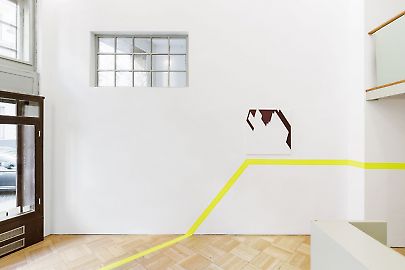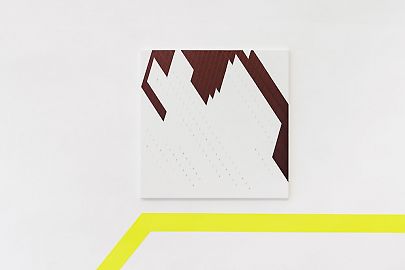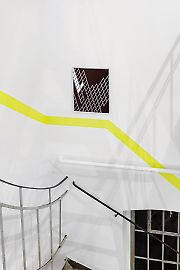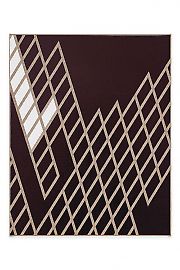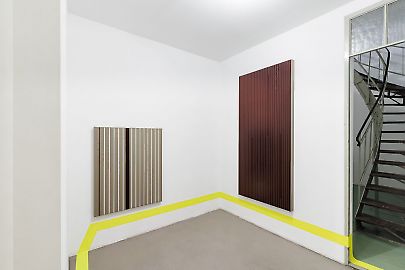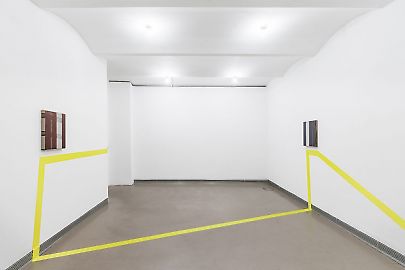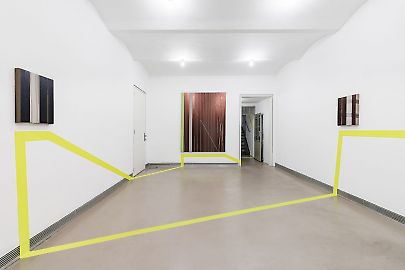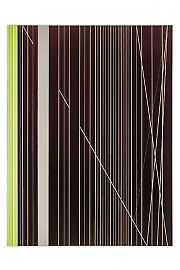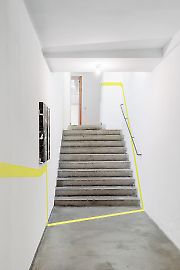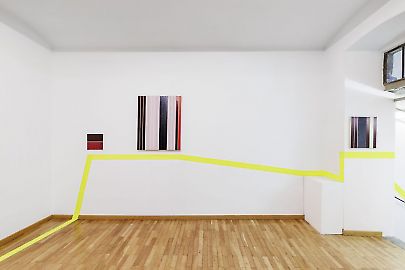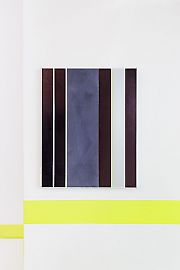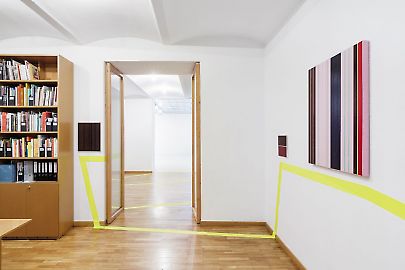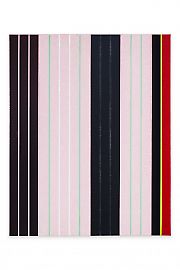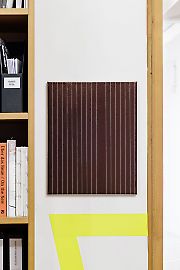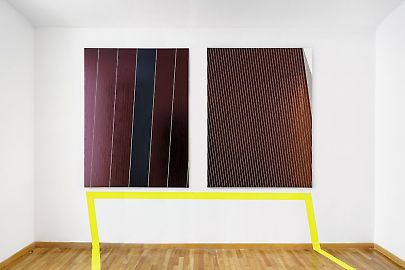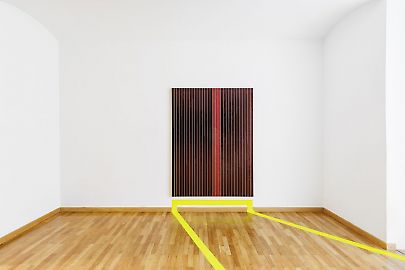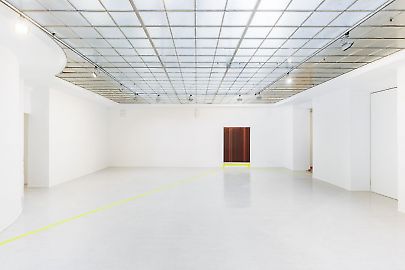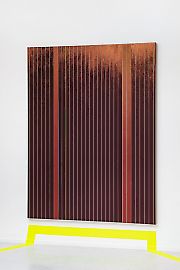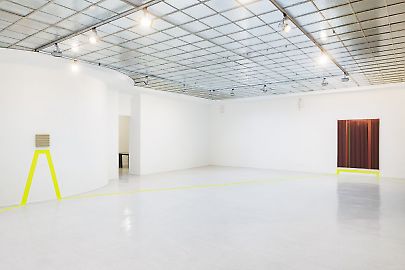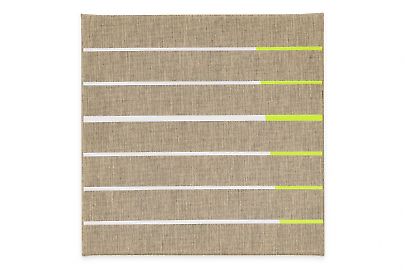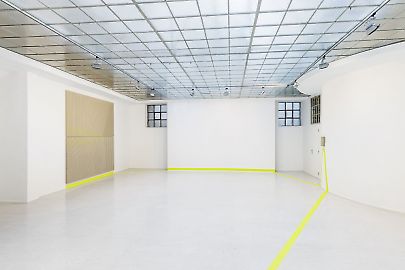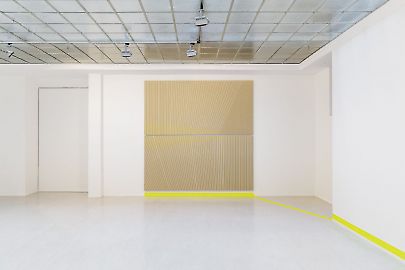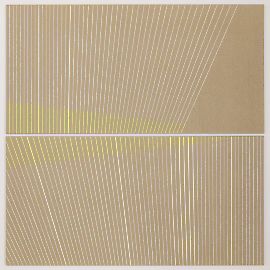Herbert Hinteregger -- How to (Untitled)
[On the exhibition How to (Untitled) by Herbert Hinteregger at Georg Kargl Fine Arts, October 2022]
Herbert Hinteregger holds a significant international position in the field of abstract painting with his body of work, which he has been developing since the mid-1990s. His practice is very characteristic, as it can be understood as a bridge between the principle of reduction and the principle of the additive and referential in the development of abstraction. At the center of his work is the questioning of the possibilities of painting today, the experimental elaboration of a diverse language of abstraction that is related to the world - to space, to the body, to emotions, perceptions and associations, implicitly also to social, political and cultural Subjects.
In his painting, Hinteregger combines specific conceptual, process and material-related aspects. This includes a constantly expanding palette of sometimes unusual materials such as ballpoint pen ink, primers, tapes, and natural materials such as sand, and more recently also highlighter inks which he combines with color and surface variations of fabrics and textiles - basically a combination of consumer products and natural materials. Another aspect of his work is his characteristic rhythmic imagery, which oscillates between rationality and intuition, between concentration and irritation. The painting Untitled (Falshöft), one of the new works created for the exhibition, paradigmatically embodies these elements. The wavy fabric pattern of the support material enters into a dialogue with the linear applied stripes of ballpoint pen ink and seems defiant to elude the superordinate schematization.
Hinteregger's visual language has differentiated over the years. It ranges from early monochrome color fields to gestural sponge images to stripes and diamonds, nets and grid systems whose clarity and unambiguousness are undermined by shifts, layers, gaps and drifts. His vocabulary is based on a work process that – contrary to all practiced efficiency efforts – is deliberately slowed down. The ballpoint pen ink is manually dripped from leads, the painting itself is a slow, concentrated process due to the chemical qualities of the color substance, which also limits the number of works created. In recent years, Hinteregger has increasingly combined the vocabulary he developed with spatial concepts. He does not regard his paintings as self-contained units, but as elements that stand in relationship and in tension with the surrounding space. In the current exhibition How to (Untitled), the works react to the different rooms in the gallery, connected by a minimal spatial drawing in the form of a neon yellow line.
The titles assigned to the paintings refer to another level in Hinteregger's work - the conceptual consideration of translating experiences of nature into an abstract painterly language, filling this translation with intrinsic value and opening it up to the viewer's experience. An example of this is monumental two-part painting Untitled (Baltic Sea) at the center of the exhibition. The conceptual rigor of the work with its precisely calculated grid system gradually dissolves as you look at it. The finest lines, painted in many layers, rise up on sand-colored fabric and drift across the surface like waves. The division of the canvas associates the line of a horizon. Like a shadow, perhaps from a spotlight or the setting sun, a layer of neon yellow stretches across the horizon. The Baltic Sea, the North Sea and the Atlantic with their nature, but also with the destruction that is taking place, have formed a kind of counterpart or breeding ground for Hinteregger's work for several years. They are an extension of the thought that led him to experiment with dark blue ballpoint ink at art school: the desire to bring the black and wet surface of an Alpine moor lake onto the canvas. Since then, he has perfected the wet shimmer of the ballpoint pen ink in his paintings.
Jürgen Tabor
Art historian, author and curator, Generali Foundation Collection at the Museum of Modern Art, Salzburg


